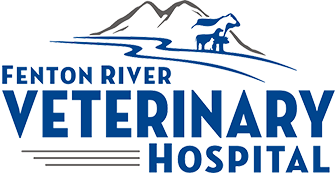Hyperadrenocorticism in Dogs: Initial and Long-Term Management
WHAT IS HYPERADRENOCORTICISM?
Hyperadrenocorticism, also called Cushing’s disease or Cushing’s syndrome, is a condition caused by long-term exposure to high concentration of cortisol, a glucocorticoid hormone that is necessary for life and is normally secreted in response to stress. The chronic excess of cortisol leads to clinical signs (“symptoms”), which are similar to those observed after administration of steroids such as prednisone. These clinical signs might progress slowly, and in some dogs the disease may remain unnoticed for some time. The most common signs are drinking and urinating excessively, increased appetite, weakness and fatigue, excessive panting even at rest, dull and dry hair coat, hair loss or a distended abdomen with potbellied appearance.
There are two main causes of this disease in dogs. The most common cause of the disease (85% of cases) is a benign tumor in the pituitary gland located in the base of the brain. In this presentation, also known as pituitarydependent hyperadrenocorticism (PDH), the pituitary gland produces high amounts of a hormone (ACTH or adrenocorticotropic hormone) that stimulates cortisol production in both adrenal glands located in the abdomen (suprarenal glands in humans).
In approximately 15% of dogs with the disease, a tumor in one of the adrenal glands produces the excess of cortisol, while the other adrenal gland usually stops functioning. In these cases, the disease is called adrenal-dependent hyperadrenocorticism (ADH).
DIAGNOSIS
Diagnosis of hyperadrenocorticism requires routine blood and urine tests and hormonal tests to document chronic hypercortisolism. Diagnostic imaging will also be needed to confirm the disease or to differentiate between pituitary and adrenal dependent hyperadrenocorticism.
TREATMENT
Hyperadrenocorticism can be managed with different treatments, all of them with the same objective: TO REDUCE YOUR PET’S EXCESSIVE LEVELS OF CORTISOL.
In dogs with PDH, the treatment of choice is the administration of the medication trilostane (Vetoryl), which reduces the synthesis of cortisol in the adrenal glands. The administration of trilostane will be needed for life, since its effect is reversible and it will disappear some hours after its administration. You should notice the effect of trilostane during the first days of treatment; your pet will drink less water and urinate less, the appetite will be reduced, and probably she/he will feel better. Other issues such as hair loss, skin problems, weight gain and pendulous abdomen, as well as some of the common blood test findings (increased liver enzymes) may take 3 to 6 months to resolve. The hair coat may worsen transiently before it improves.
Trilostane is not toxic per se; however, it may produce adverse effects, due to a rapid or severe reduction of cortisol or other adrenal hormone concentrations. These adverse effects can be subtle: reduced appetite and thirst, and soft feces; or moderate to severe, including reduced or absent appetite, nausea or vomiting, diarrhea, and weakness. If you observe any of these signs, even if they are subtle, YOU SHOULD STOP GIVING THE TRILOSTANE and contact us as soon as possible. These clinical signs will usually disappear after 1 to 2 days of medication withdrawal, since cortisol secretion is restored. However, in a small number of patients, clinical signs of hypocortisolism might persist and some dogs might need hospitalization. Occasionally, dogs treated with trilostane develop permanent hypocortisolism and they may require life-long oral steroid supplementation.
MONITORING THE INITIAL DOSE
In most patients, the initial dose must be adjusted during follow-up (>70% of patients), and thus, it is essential to carefully monitor your pet during the treatment with trilostane. Checkups must be done after 1 to 2 weeks of treatment, a month after the first recheck, and about every 3 months afterwards. In well-regulated dogs, after the first year of the treatment, checkups can be done every 6 months.
When you bring your pet to the veterinarian during the follow-up, she/he must be fasted and trilostane should have been administered 2-4 hours previously. Also, the day you come to the hospital we ask you to bring a first morning urine sample from your pet. At the clinic, a medical history and physical exam will be performed as well as blood analyses and blood pressure measurement, in order to evaluate whether the dose is adequate or should be modified.
In dogs with PDH, treatment with trilostane leads to an increase in quality of life and survival. If trilostane is not an option, an alternative is mitotane. Mitotane is a medication which can destroy adrenal cortices. The efficacy in dogs with PDH is elevated; however, adverse effects are more frequent than those observed with trilostane, and thus, mitotane should only be used when trilostane is not an option. There are other therapeutic alternatives, but they are usually less efficacious (ketoconazole, selegiline, aminoglutethimide).
In some dogs with PDH (25%), a pituitary macrotumor might be causing the disease, and, in these cases, central nervous signs may occur (reduced appetite, behavioral changes, reduced consciousness, etc.). Advanced imaging techniques (magnetic resonance or computed tomography) are needed to confirm the pituitary lesion. A different type of treatment (radiotherapy or hypophysectomy) might be recommended in these cases.
In dogs with adrenal tumor dependent Cushing’s disease, the treatment of choice is the surgical excision of the adrenal tumor (adrenalectomy), especially in tumors that are not invading surrounding vessels (vena cava) and without distant metastases. Adrenalectomy should be done by an expert since complications are common in this type of procedure, including a mortality rate of 20 to 40%. Adrenal tumors might also be treated with mitotane, since at high doses, it can cause tumor necrosis; however, at such doses, the risk of toxicosis is also elevated. An alternative treatment in dogs with ADH is the administration of trilostane, which reduces the levels of cortisol and improves the clinical condition of the dogs. Trilostane is an alternative in a short term period (previous to surgery) or can be used lifelong in dogs that cannot be surgically treated.






